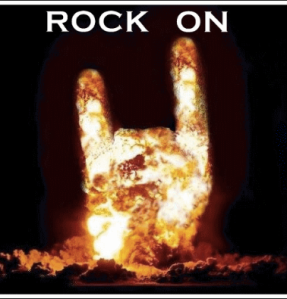I sat down at the only seat available, scoring a spot at a sushi bar with the perfect view of Game 1 of the NBA playoffs, ultimately an unfortunate loss for the Dubs to Toronto. An hour and a half after our usual dinner time at home and with no afternoon snack, I was eyeballing the sushi roll on the plate of the gentleman sitting to my right. He kindly let me that the staff were very busy, and it could be a while until someone would be available to take my order. Thus, I continued eyeballing his plate. That sushi looked good.
As part of a typical mid-week hotel conversation opener, he asked, “Are you here for the conference?” “No, I have a meeting here tomorrow. What conference is in town?” As it turned out, I had stumbled into the 10TH ANNUAL AWE USA 2019 Conference -The World’s #1 AR+VR Conference and Expo. This conference is held around the world four times each year, once in the United States.
The gentleman’s name was Nate. He works for a construction company and was looking for a virtual reality company to partner with to build out his company’s projects. He spoke of the increased marketing and funding opportunities when presenting designs to investors in a virtual format, the increased creativity and iterations available to architects and engineers during the design and troubleshooting phases of project management. He was also impressed with the associated return on investment with less loss of time during planning and troubleshooting, savings on materials, and the decreased risk for construction workers during the physical building phase.

I thought, “This is brilliant!” Then it struck me. This is what is real in architecture and construction right now. He showed me an example of the virtual construction tour he took earlier that day at the VR/AR playground. “Whoa, wait a minute, this is happening right now?! Right here? In this building?”
Holy smokes, at the rate technology, progresses, what is this going to look like in two years from now?” Oh, my, goodness, what are architecture design, engineering, and construction going to look like for today’s kindergartener when they enter the workforce in 10– 20 years?
We are literally still having conversations about the need to get rid of meaningless worksheets in schools! We’re spending far too much time with politics and judgment around standardized test scores, compliance issues in schools, and how to modify the antiquated industrial model learning structures still so pervasive in schools.
Meanwhile, much of industry isn’t even bothering to engage in the K-12 conversation. The adaption to support current learning and current real-world practices is taking far too long. To remain a competitive and economic viable nation, industry is having to create their own education programs.
The critical mass needed to create the change required in the school system exists. Yet, many organizations with the same vision and the same goals remain siloed in their advocacy, professional education, and industry partner efforts. It’s time to bring the shared expertise of industry, education, and the legislature together to be bold and swift in embracing the Fourth Industrial Revolution and ensuring that our children are equipped to live in this world and that Baby Boomers and Generations X understand how to support the shift that is needed.













